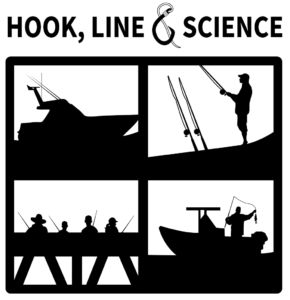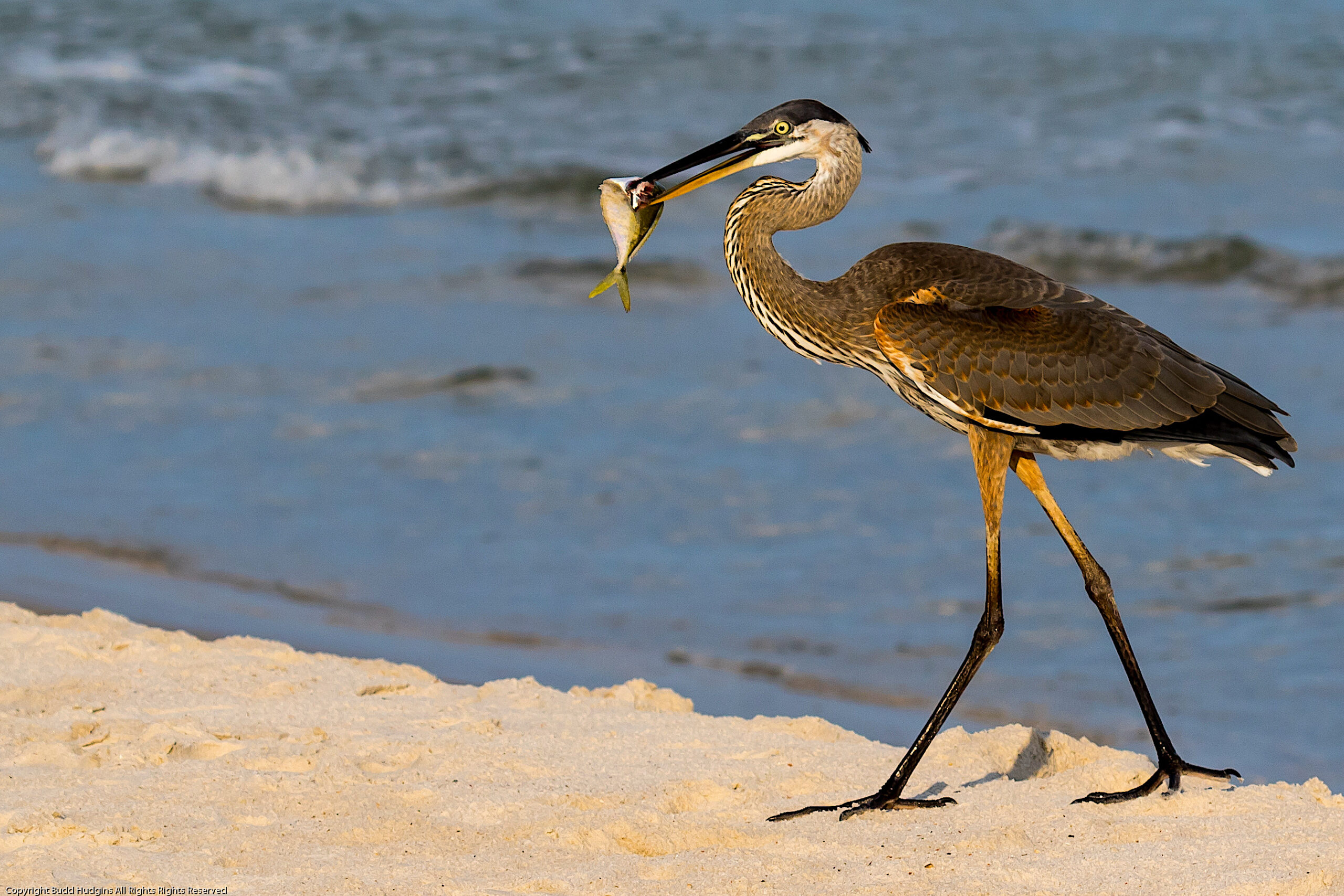If an artificially-created habitat meets all the needs of marsh-dwellers, it might also bode well for what you find on the end of your hook.
Research Need
Living shorelines use native marsh grasses and artificial oyster reefs to protect river and estuarine shorelines against erosion from waves from storms and vessel traffic. These enhanced shorelines also supplement natural habitats for fish, shorebirds, and other marsh-dwellers.
Much of the previous research on living shorelines has focused on fish and invertebrates that use these structures. Researchers in the Chesapeake Bay wanted to know whether living shorelines provide the same habitat benefits for herons and other shorebirds that natural marshes do.
What did they study?
Researchers used video and audio monitoring at 26 sites across the Chesapeake Bay to track the number of herons and other shorebirds that spent time in natural marshes and living shorelines. Of the 26 sites studied, 13 were natural marshes and 13 were human-made living shorelines — which the research team paired based on location, marsh vegetation, shoreline structure, and more.
They conducted the study over two consecutive summers. Researchers also recorded the types and abundance of shorebird prey available in both habitats.
What did they find?
Overall, this study found that herons and other shorebirds had no preference for one habitat or the other. This means that from a big picture perspective, living shorelines and natural marshes are functionally similar for these birds.
In fact, researchers found that green herons, spotted sandpipers, and killdeer chose to spend more time in living shorelines than natural marsh habitats. While collecting their data, the researchers noticed that some shorebirds, especially the smaller green herons, sandpipers, and killdeer, displayed an additional affinity for living shorelines, spending more time preening and resting on oyster reefs and rock sills.
What else did they find?
Researchers also found that the abundance of shoreline prey available in living shorelines and natural marshes were the same across the study sites. Shorebird prey includes various species of juvenile fish, as well as grass shrimp, blue crabs, and snails.
This finding is especially important to anglers because marshes, whether they’re natural or man-made, serve as an important nursery habitat for many popular fish species. Knowing that living shorelines provide a favorable habitat to juvenile fish — that will later be on the end of your hook — may be reason enough for anglers to support the development of more living shorelines in their local communities.
So what?
The abundance of natural marshes is declining due to coastal development and shoreline erosion. Constructed living shorelines are increasingly becoming the preferred tool when both enhanced habitat and stronger shorelines are necessary.
Reading
Leu, M., Isdell, R. E., Galvin, R. M., III, Rapp, A. J., Mason, S. D., Bilkovic, D. M., & Chambers, R. M. (2023). Comparable use of tidal living shorelines and natural‐fringe marshes by herons and shorebirds. In Ecosphere (Vol. 14, Issue 11). Wiley. https://doi.org/10.1002/ecs2.4683.
Funding for this study was provided by the National Science Foundation Coastal Science, Engineering, and Education for Sustainability program.
Lead image: Great blue heron. Copyright: Budd Hudgins, All Rights Reserved.
BY ANIKA PRUIM (below), a graduate student in coastal and ocean policy at the University of North Carolina Wilmington and an intern at North Carolina Sea Grant’s Wilmington office. She is passionate about the link between science and policy, as well as bringing coastal science to the public in interesting and engaging ways.

The text from Hook, Line & Science is available to reprint and republish at no cost, but only in its entirety and with this attribution: Hook, Line & Science, courtesy of Scott Baker and Sara Mirabilio, North Carolina Sea Grant.

- Categories:




